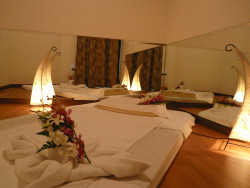
August 25, 2011
To Boldly Go Where No Man Has Gone Before
Working toward gender equality in language and society
By Metropolis
Originally published on metropolis.co.jp on August 2011

The other day I was sitting on the can in the men’s bathroom at Wonder Rex reading the instructions on how to use the baby seat that was attached to the inside of my father-friendly stall, when I noticed that the illustrations accompanying the instructions featured a female parent, and I thought: Huh. That’s interesting. When will a female parent ever use that seat?
So I pulled out my smart phone and started surfing the web for better reading material when I came across this sporting news headline: “108-3 girls basketball rout raises questions.” Ignoring the absurdly lopsided score, I again thought: That’s bizarre. Why does the name basketball need to be qualified for women? Or, more accurately, why is the men’s game the standard and the women’s game the exception, as exemplified through name modification?
Then a few days ago there was this headline: “U.S. play Women’s World Cup in kit resembling nurse’s uniform.” I thought: Wow. A double whammy.
In fact, the more I looked, the more I found standardized inequalities between the genders; and the more I found, the more I became attuned to noticing yet more. Of course, the areas of society with the highest visibility get the most attention: Did you hear about the Indian school textbooks a few years back that stated donkeys were more loyal than housewives (another double whammy)? Or about the Italian firm that issued pink slips only to its female employees? Or how about—on a slightly different note—the Swedish preschool in Stockholm that has attempted to erase all gender discrepancies from its program in order to promote gender equality from an early age?
But let us consider areas of life with low-visibility, areas that generally go unnoticed or lack consideration. These can be the most insidious in promoting gender inequality, areas like language and education. Language and education, after all, infiltrate all areas of human life and have the most potential for damage, the former even more so than the latter. Over the years, though, some aspects of the English language have gone through the revision process and we no longer have to endure the generic he, or male-marked, occupational titles for gender-unspecified people.
Or do we? I taught a lesson the other day using a textbook in which the characters complain about the absence of a bellman at a hotel (what happened to the bellhop?). And then I picked up some light reading last week and encountered a consistent use of generic he throughout—publication date 2008 and written by a female.
Even if the more noticeable transgressions someday undergo complete rehabilitation with regards to gender equality, there are still other aspects of language and education that will need work and take longer to amend. Earlier this year I did some original research on a private English conversation school textbook with regards to language and gender equality. Private schools are in the habit of publishing their own materials and thus remain hidden from the prying eyes of the greater academic community, and yet figures from the Ministry of Economy, Trade and Industry (METI) show that in 2005 there were 1,144 documented language enterprises with almost 33,000 people employed and over one million students on record. That’s a lot of students learning language at private institutions.
This is what my research revealed: the more salient aspects of language and gender showed progressiveness and a carefully considered predilection for gender equality; the less salient aspects left something to be desired. More specifically, there was no use of the generic he and the visibility and distribution of females throughout the textbook was equal to that of males—greater, in fact. But social and occupational roles were horribly stereotyped: unemployed women in skirts gossip about shopping while employed men in business suits play golf and burn dinner. And so while we seem to be on the path to gender equality, we also seem to have a way to go.
There are a few simple things that can be done by everyone to promote gender equality. One is to use gender inequalities as opportunities for discussion. Another is to challenge standardized stereotypes in our everyday lives. And yet a third is to encourage a change in the way people think about our world and how it is organized. While I worry about my two daughters and the challenges they’ll face in life as females, I am also acutely aware that everyone—female and male alike—has a stake in the quality of the human race. Some men may find satisfaction with the coerced elevation of their status in society, but others are more aware of the losses we all incur when half of the population is treated like second-class citizens.







